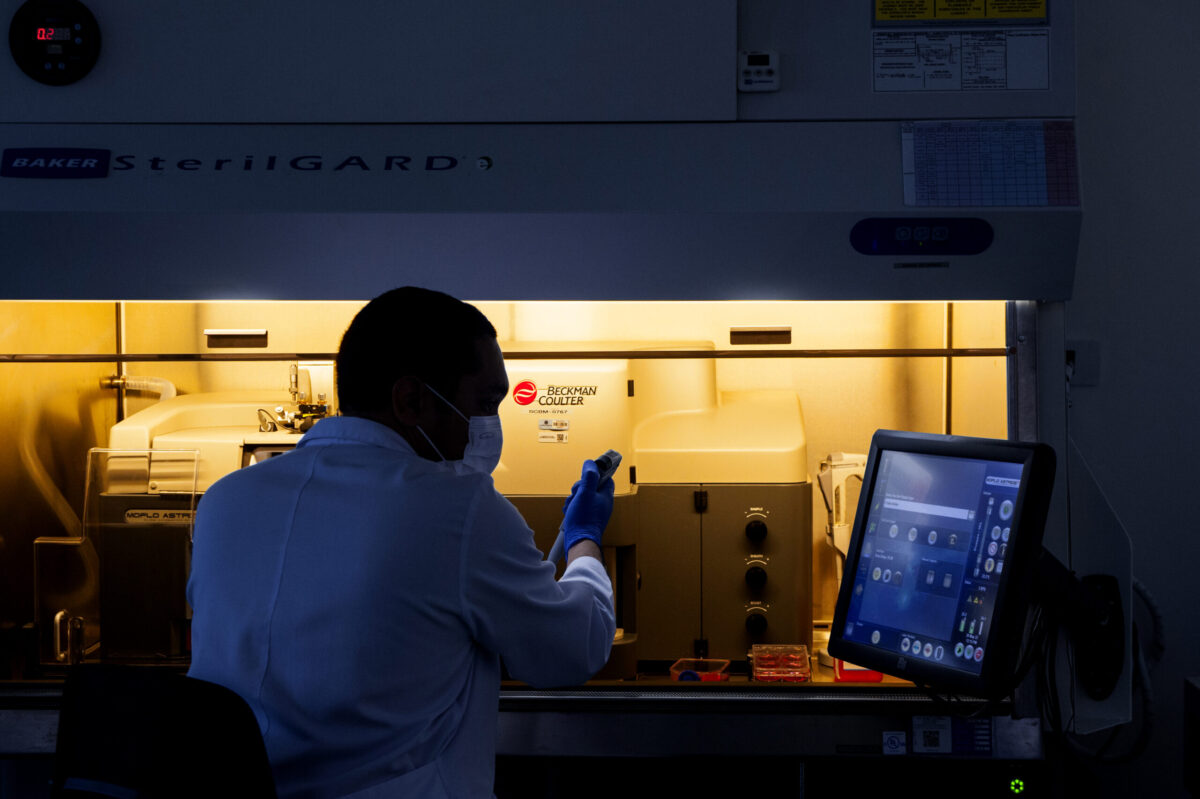 #Essays
#Essays
New era of cancer treatment
Efficacy of messenger RNA vaccines reinforces the therapeutic potential of RNA molecules in the fight against cancer
 Credit: Léo Ramos Chaves
Credit: Léo Ramos Chaves
Technological developments have increased our understanding of the complexity of the human organism, allowing many concepts in biology to be revisited. The “central dogma of molecular biology” is one of them. In the past, RNAs other than structural RNAs (rRNAs and tRNAs) were considered passive conductors of genetic information between DNA and proteins. In recent decades, however, the complex role of RNA in gene regulation has been described and the discovery of multiple regulatory functions has led to studies into therapeutic uses for these molecules.
One approach to RNA therapy is the introduction of synthetic coding RNA (mRNA) into cells to control gene expression. Other RNA therapies use non-coding RNAs to inhibit RNA activity (small interfering RNAs [siRNA] and antisense RNAs), modify protein activity (RNA aptamers), reprogram genetic information, or modify DNA (RNA-guided CRISPR-Cas).
While the list of RNA-based drugs has been growing in recent years, it was during the COVID-19 pandemic that this innovative treatment really changed the landscape of the pharmaceutical industry.
The pandemic propelled the development of mRNA vaccines that encoded the virus’s spike protein. The extraordinarily high efficacy of these vaccines was an important milestone in this new era of therapeutic RNA, an approach that was first theoretically introduced by John Wolfe in 1990.
Tumor antigens
The theory behind the use of mRNA vaccines in oncology is that they allow treatments to be customized through synthetic mRNAs designed to encode specific tumor antigens, promoting an anti-tumor immune response.
In addition to their immunomodulatory capabilities, mRNA vaccines can simultaneously reach multiple targets, which is extremely important in multigenic diseases like cancer.
Studies show that RNA therapy, especially through the use of siRNA against genes involved in cellular pathways crucial to cell proliferation, survival, and dissemination, can halt tumor progression and could potentially reduce the resistance of cancer cells to conventional treatment options.
Another potential application of RNA is to boost the therapeutic response to immunotherapy. One such technique that has been explored is the administration of RNAi molecules that target immunosuppressive proteins or receptors present in T-cell membranes.
There are numerous advantages in acting at the RNA level to control gene expression, such as the fact that the approach does not promote interaction with the host’s genome, is well tolerated, is non-infectious, and can be rapidly produced at a competitive cost.
However, the short half-life of synthetic RNAs is a major challenge to therapeutic success. Once in circulation, they are degraded by extracellular RNases in a metter of hours.
Intercellular communication
Advances in strategies for increasing mRNA stability and new delivery systems have improved the effectiveness of these molecules in vivo. The main delivery system is currently lipid nanoparticles, due to the fact that they have the same structure as cell membranes, ensuring high biocompatibility.
Another newer method is extracellular vesicles: membrane-delimited particles that are naturally produced by cells. Their main function is to provide intercellular communication by transferring their contents, particularly nucleic acids.
The fact that these biological nanoparticles are natural carriers of nucleic acids has stimulated research into their use for delivering therapeutic siRNAs. The nanoparticles can be functionalized with different RNA classes, in addition to allowing delivery to target cells using aptamers incorporated into their structure.
The versatility of RNA nanoparticles emphasizes the therapeutic potential of RNA molecules, which can participate in a range of ways, from building nanostructures to acting as therapeutic agents. Although no nanostructured RNA cancer treatment has yet been approved, the results obtained in response to the pandemic have encouraged greater funding in this area, driving the hope for new discoveries in the near future.
*Renata de Freitas Saito is a researcher at the São Paulo State Cancer Institute [RL1]
*Roger Chammas is a professor at the School of Medicine of the University of São Paulo.
*
This article may be republished online under the CC-BY-NC-ND Creative Commons license.
The text must not be edited and the author(s) and source (Science Arena) must be credited.


